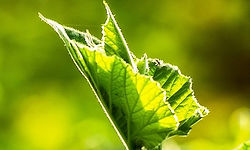Home > Information > Jute
Jute
The ecological all-rounder
Jute is one of the most important natural fibers and next to cotton in terms of production and usage. Jute is a long, soft, shiny vegetable bast fiber (produced from the skin of the plant). Jute is a ligno-cellulosic fiber, composed of the primary plant components cellulose (plant fiber) and lignin (wood fiber). There are two main varieties of jute: White jute (Corchorus capsularis) and Tossa jute (Corchorus olitorius).
Jute ('Shada Pat' in Bengali) has been cultivated in Bangladesh and East Bengal of India more than four hundred years ago. It has been an integral part of the culture in those regions. These regions contribute almost 85% to the world jute cultivation. Jute is an important cash crop for smallholders in Bangladesh and known as “Golden Fiber of Bangladesh”.

Jute cultivation
Rich and fertile alluvium soil and warm and moist climatic conditions are suitable for jute cultivation. Monsoon climatic condition is ideal for production. The suitable climatic conditions for jute cultivation are the following:
-
Temperature: 20 °C to 40 °C, 25 °C optimal
-
Rainfall: 5 to 8 cm of weekly rainfall
-
Humidity: 70 % to 80 % of relative humidity
-
Soil: Alluvial, loamy soil or river basin, plain land or gentle slope
Jute is a rainy season crop, sowing starts in March to May according to rainfall and type of land and continues until June. Farmers mainly use compost or firm yard manure as fertilizer. Very little amounts of fertilizer or pesticides are required in contrast to the huge inputs for cotton production. However, jute growing gives employment to many people as it is very labor intensive. Jute is harvested from July to September depending upon whether the sowings were early or late. Early harvesting (just before the plant produces seeds) results in good and healthy fiber. When the plants reach 2,5 to 3,5 meter they are cut off close to the ground with sickles. The stalks are tied into bundles and steeped in water at least at 60 to 100 cm depth for about 20 days of retting.

Fiber extraction process
The jute plant's fibers are beneath the bark and surround the woody central part of the stem. Retting is the process of extracting fiber from the long lasting stem or bast. Typically, farmers use water or microbial retting to extract fibers but recently ribbon retting technology is also becoming popular. Through the retting process fibers get loosened, softened and separated from the woody stalks. After extracting the fiber, the fiber is washed with water and squeezed for dehydration. The extracted fibers are further washed with fresh water and allowed to dry on bamboo poles. Finally, they are tied into small bundles and ready to be sold to the primary market.

Steps of the fiber extraction process:



